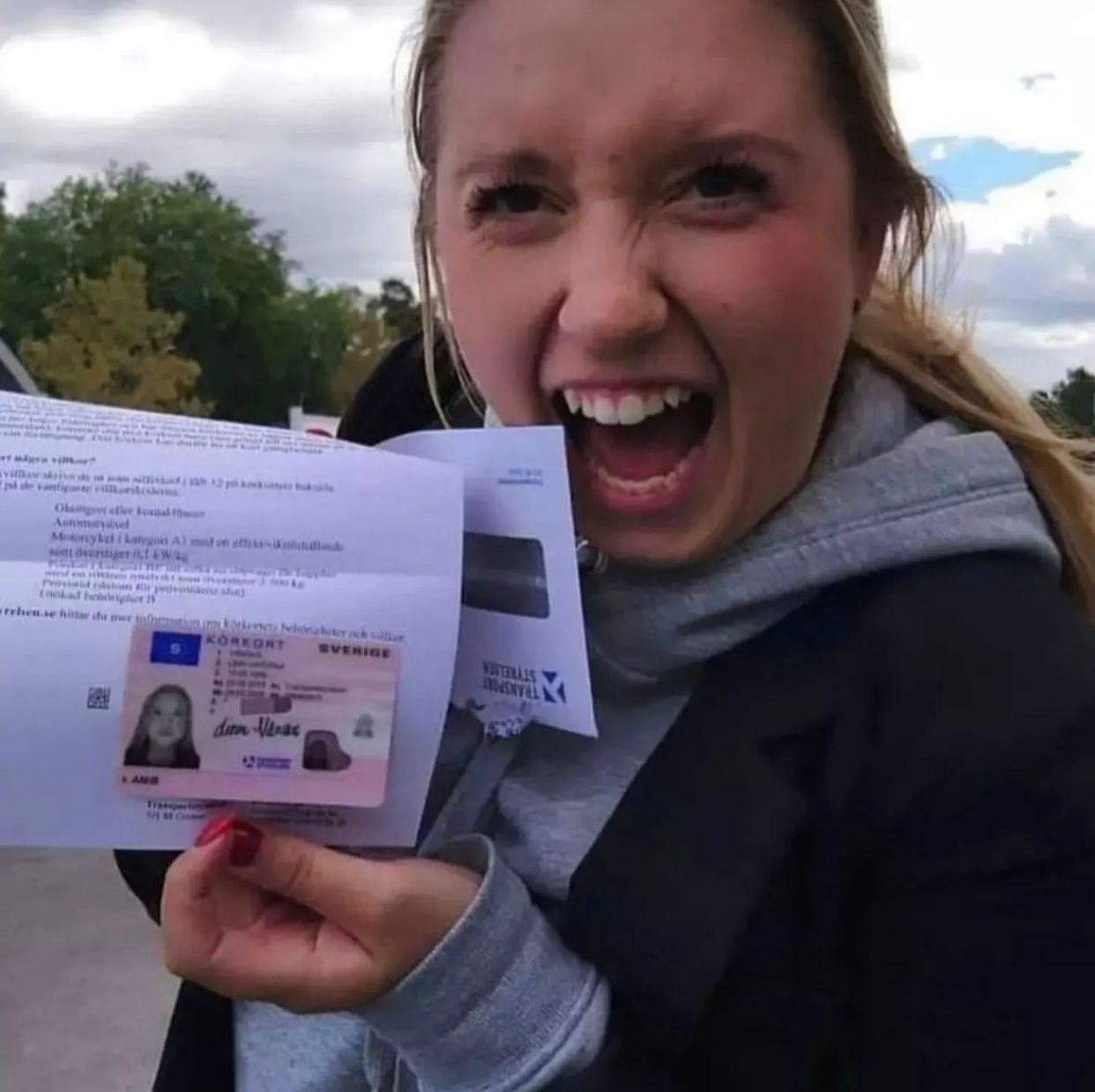The 12 Worst Types Of Tweets You Follow

본문

Understanding the Driving License: A Comprehensive Guide
A driving license is an important file for people who want to run a motor lorry legally. This guide aims to provide an extensive understanding of the driving license, including its types, requirements, application processes, and the significance it holds in today's fast-paced society.
What is a Driving License?
A driving license is a government-issued file that licenses a private to drive an automobile on public roadways. This license is important not only for adherence to the law but likewise as a procedure of competency to ensure that motorists possess the needed skills to operate a vehicle securely.

Types of Driving Licenses
Driving licenses vary by jurisdiction, and köRkortsonline (Xiaowangnas.com) they can be classified into a number of types. Here's a breakdown:
| License Type | Description |
|---|---|
| Learner's Permit | A provisional license allowing new drivers to practice under specific conditions. |
| Full License | A basic driver's license permitting the holder to run most kinds of cars without limitations. |
| Commercial License | Required for people wishing to run business trucks or buses. |
| Motorcycle License | Specifically designated for running bikes and motorbikes. |
| International Permit | Allows people to drive in foreign countries, provided they have a legitimate nationwide license. |
Why is a Driving License Important?
Holding a legitimate driving license has a number of advantages:
- Legal Requirement: It is a legal necessity to drive on public roadways.
- Safety Assurance: A driving license guarantees that the motorist has actually undergone required training and evaluations to run a lorry safely.
- Recognition: It works as an official type of identification, frequently required for different services.
- Insurance Compliance: Many vehicle insurance provider need legitimate driving licenses as one of the conditions for issuing a policy.
- Work Opportunities: Certain jobs need workers to have a legitimate driving license, particularly those involving transport.
How to Obtain a Driving License
The process of acquiring a driving license usually involves several steps, which can vary by area. Below is a standard overview of the actions to follow:
- Eligibility Check: Most jurisdictions have age and residency requirements.
- Written Test: Applicants normally must pass a written exam covering the rules of the roadway.
- Vision Test: A vision evaluation might be required to guarantee the candidate can see well enough to drive safely.
- Practical Driving Test: New drivers should demonstrate their driving skills in a useful test.
- Application Submission: Complete the necessary forms and send the necessary paperwork, including proof of identity and residency.
- Payment of Fees: Pay any involved costs for the application process.
- Waiting Period: Some areas have a probationary period throughout which a student's permit need to be held before a complete license is provided.
Typical Requirements for Application
- Proof of identity (e.g., birth certificate, passport)
- Social Security number or comparable recognition
- Evidence of residency (e.g., energy costs, rental contracts)
- Completion of a driver's education course (if applicable)
Tables: A Comparative Look at Driving License Categories
The following table highlights distinctions in requirements and functions of different kinds of driving licenses:
| Type of License | Age Requirement | Testing Requirements | Limitations |
|---|---|---|---|
| Learner's Permit | Varies, typically 15-16 | Composed, vision | Needs a licensed grownup in the lorry |
| Full License | Normally 18+ | Written, vision, practical | None (unless specific recommendations use) |
| Commercial License | Typically 18+ | Written, vision, useful, extra tests | Restricted to commercial automobiles only |
| Motorbike License | Varies, generally 16 | Written, vision, useful | Usually restricted to motorbikes just |
| International Permit | 18+ | Valid national license required | Valid in nations that acknowledge it |
Frequently Asked Questions About Driving Licenses
1. For how long does it require to get a driving license?
The timeline varies by region and private scenarios, however a straightforward process that includes taking a course and finishing tests may take several weeks to a couple of months.
2. What should I do if I lose my driving license?
In case of loss, report the event to local authorities and request a replacement through the appropriate motor vehicle department.
3. Can I use an international driving authorization in my home nation?
The majority of nations need a legitimate nationwide license, and an international driving permit is meant for use abroad. Always check local laws.
4. Are there particular laws for chauffeurs under 18?
Yes, many locations have graduated licensing laws that impose constraints on younger drivers, such as passenger limits and nighttime curfews.
5. What occurs if I get caught driving without a license?
Driving without a valid license can result in fines, automobile impoundment, and even legal charges, depending on regional laws.
In conclusion, obtaining a driving license is a significant milestone for many people. It entails a structured procedure designed to guarantee safety and legality on the roads. Comprehending the types, significance, and application processes can empower potential drivers to navigate their licensing journey with confidence. Whether for individual use or professional purposes, a driving license is a valuable asset in the modern world.


댓글목록0
댓글 포인트 안내